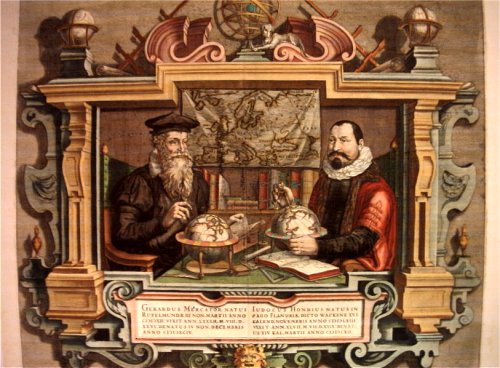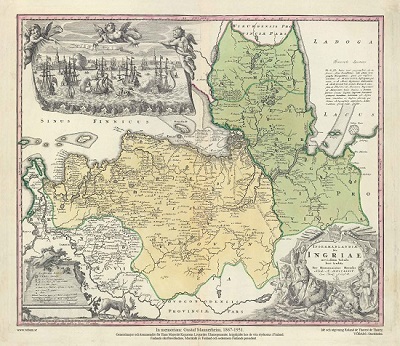1870-1921.
Norsk officer. Han började studera 1888, tog examen vid 'Krigsskolen' 1891, blev 1900 kapten och 1916 major och chef för norska generalstabens kommunikationsavdelning. Under en rad år var han knuten till 'Norges Geografiske Opmaaling' som chef för den topografiska avdelningen. Han gav ut flera rese- och bilkartor över Norge.
Studentene fra 1888. - U.B.
Född 24 mars 1817 i Neuchâtel, död 27 maj 1901 i Stockholm
Militär, överintendent, tecknare. Föräldrar: godsägaren Georges-Alexandre D. och grevinnan Hedvig Sofia Charlotta Amalia Lewenhaupt. – D. inträdde i sv. militärtjänst 1833, blev underlöjtnant vid Svea livgarde 1837, löjtnant 1844, kapten 1854, major och överstelöjtnant 1862. Avsked erhöll han 1864. Han tjänstgjorde som stabsadjutant vid livgardesbrigaden 1847, vid stabsexpeditionen under kronprinsen 1848, som kurir till Haag 1850 och som militärattaché i Paris 1858-62. Han utnämndes till kammarherre 1856 och åtföljde kronprins Karl (Karl XV) till Norge s. å. År 1859 blev han adjutant hos Karl XV. Vid faderns död 1863 övergick adelskapet på D. som utnämndes till kabinettskammarherre, överintendent och chef för Överintendentsämbetet samt preses för Konstakad. 1864. Han var ordf. i Sv. slöjdfören. 1871-1876 och i Sveriges allm. konstfören. 1877-86. Sedan 1861 var han hedersled. av Konstakad. och beklädde under senare delen av sitt liv en mängd poster i styr. och kommittéer för olika konst- och världsutställninga...
Svenska män och kvinnor. Band II C-F, sid 208.
1790-1825. Född i Verdalen, död i Trondheim.
Norsk officer. 1808 blev han officer, 1815 kapten och divisionsadjutant i Trondheim och 1823 major. Under åren 1810-14 utarbetade han en rad kartor över militära områden i Trondheims stift. Dessa kartor, som tidigare aldrig getts ut, ligger till grund för flera senare kartarbeten. Klüwer hade även starka arkeologiska intressen och lade ned ett betydande arbete vid utgrävning och registrering av fornminnen i sitt distrikt. Han var medlem av 'Det kgl. Norske Videnskapbers Selskab' i Trondheim och det svenska sällskapet Götiska förbundet.
Halvorsen. - Ovenstad.
Ingermanlandiae – Homanns Erben 1734
Senegalflodens inre lopp samt bifloden Faleme och fortet St. Joseph. - J. N. Bellin, 1740-talet.
Olaus Magnus text till den berömda kartan "Carta Marina".
Texten finns även på katalanska, spanska och engelska.
Bureus karta över norden
Kartor och atlaser
Bilder och planschverk
Teckenförklaringar

Porträtt på Gerard Mercator och Jodocus Hondius.
"Striking image showing Mercator and Hondius in their idealized workshop.
This famous portrait of two of the most important mapmakers during the Golden Age of Dutch cartography was engraved by Coletta Hondius, as a tribute to her late husband, shortly after his death. Gerard Mercator is shown with his successor, Jodocus Hondius, seated at a table surrounded by the implements of their trade. The fine portrait is set within an elaborate strapwork framework that includes a wall map of Europe.
Gerard Mercator is renowned as the cartographer who created a world map representing new projections of sailing courses of constant bearing as straight lines—an innovation which, to this day, enhances the simplicity and safety of navigation. In his own day, Mercator was the world's most famous geographer. He created a number of wall maps early in his career, as well as one of the earliest modern world Atlases in 1595. Although this was the first appearance of the word Atlas in a geographical context, Mercator used it as a neologism for a treatise on the creation, history and description of the universe, not simply a collection of maps. He chose the word as a commemoration of King Atlas of Mauretania, whom he considered to be the first great geographer.
Jodocus Hondius was a Dutch engraver and cartographer. He is best known for his early maps of the New World and Europe and for continuing publication of Gerard Mercator's World Atlas. He also helped establish Amsterdam as the center of cartography in Europe in the 17th century. In England, Hondius publicized the work of Francis Drake, who had made a circumnavigation of the world in the late 1570s. In 1604, he purchased the plates of Gerard Mercator's Atlas from Mercator's grandson and continued publication of the Atlas, adding his own maps over the next several decades. Hondius later published a pocket version Atlas Minor."



